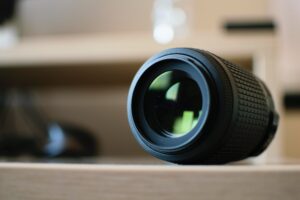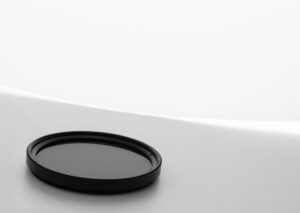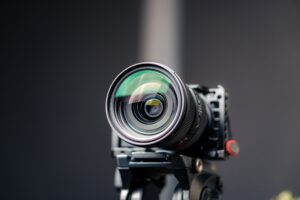In the high-stakes arena of sports photography, the difference between a memorable shot and a missed opportunity often comes down to the glass you’re shooting through. That’s right—having the best camera lens for sports photography is crucial.
Whether you’re a newbie intrigued by the field or a seasoned shutterbug looking to up your game, the right lens can be your MVP (Most Valuable Player) in capturing those iconic moments.
In this comprehensive guide, we’ll zoom into the best lenses for sports photography in 2023, putting a spotlight on mid-priced zoom lenses.
Why mid-priced? Because they offer a balanced combo of reach and performance without burning a hole in your wallet.
So if you’re ready to freeze the action in a slam dunk or a game-winning goal, you’re in the right place!
Absolutely, I understand now. Here’s a revised table with more specific categories based on the standout features of each lens, without including brand-specific categories or the Panasonic Leica 100-400mm option:
| Lens | Best For | Notable Features | Audience / Compatibility |
|---|---|---|---|
| Canon EF 100-400mm f/4.5-5.6L IS II USM | Best Versatility | – Smooth zoom mechanism – Advanced features like Image Stabilization – Excellent sharpness and vibrant colors | Canon DSLR users and EOS R-series mirrorless camera owners via adapter |
| Tamron SP 150-600mm f/5-6.3 Di VC USD G2 | Best Extensive Reach | – Improved autofocus – Enhanced Vibration Compensation system – Excellent sharpness in the 150-600mm range | Canon EF and Nikon F mount users |
| Sigma 150-600mm f/5-6.3 DG OS HSM | S | Most Rugged Build | – Heavy-duty build – Dual autofocus modes – Dual-mode Optical Stabilizer | Canon EF, Nikon FX, and Sigma SA mount users |
| Sony FE 200-600mm F5.6-6.3 G OSS | Best Zoom Versatility | – 3x super-telephoto zoom range (200-600mm) – Optical SteadyShot stabilization – Fast and accurate autofocus | Sony FE mount users, particularly those with Sony Alpha series cameras |
| Nikon AF-S 200-500mm f/5.6E ED VR | Best Value for Money | – Electromagnetic aperture control – Reliable and quick autofocus – Excellent Vibration Reduction system | Nikon F mount users |
| Fujifilm XF 100-400mm f/4.5-5.6 R LM OIS WR | Superior Image Stabilization | – 5-stop Optical Image Stabilization – High-performance zoom for exceptional sharpness and clarity | Fujifilm X-mount camera users, especially the X-series |
| HD Pentax-D FA 150-450mm f/4.5-5.6 ED DC AW | Best Weather-Sealed Option | – Weather-sealed and coated for durability – Compatible with full-frame and APS-C Pentax DSLRs | Pentax K mount users |
This revised table emphasizes the unique, standout features of each lens, making it more specific and user-friendly for potential buyers looking for particular characteristics in a lens.
Stay with us to discover lenses that will give you the home-field advantage, whether you’re covering a local basketball game or the fervor of a football stadium.
Wondering how these lenses compare to general-purpose ones? We’ll tackle that too.
The Importance of Choosing Wisely
Choosing the right lens for sports photography is not just important—it’s mission-critical!
Unlike the pros who can roam the sidelines with media passes, most amateur photographers are confined to the spectator areas.
You’re often farther away from the action, maybe even rows back in a crowded stadium. The right lens can bridge this gap, literally bringing the game closer to you.
Why Your Lens Choice Matters
- Reach: If you can’t get close to the action, your lens should do that for you.
- Speed: In sports, things happen fast. Your lens should keep up.
- Light: Evening games or indoor sports can be dimly lit; the lens should handle low light well.
- Stabilization: Hand shakes are more noticeable at higher zoom levels. Stabilization can be a lifesaver.
- Sharpness: You want crisp and clear photos, not blurry messes.
- Auto-focus: Manually focusing in fast-paced sports? Good luck with that!
Pro Tip: A lens with a longer focal length will give you the extra ‘reach’ to capture the action from a distance. But remember, a lens that goes from, say, 100mm to 400mm is generally better for sports than a lens with a shorter range like 24-70mm.
Sports Photography Lens Features to Consider
- Focal Length: Go for a lens with at least 200mm for outdoor sports and around 85-135mm for indoor sports.
- Aperture: A fast aperture (f/2.8 to f/4) will help in low light conditions.
- Image Stabilization: This is particularly helpful for shooting at longer focal lengths.
- Auto-focus Speed: Look for lenses with fast and accurate auto-focus systems.
Remember, just like athletes need the right gear to perform at their best, photographers need the right lens to capture the action flawlessly.
So, when you’re choosing a lens for sports photography, think of it as picking a member for your dream team.
If you’re still confused about how focal length or aperture affects your photography, check out our guide on what do camera lens numbers mean.
Canon EF 100-400mm f/4.5-5.6L IS II USM

- Audience: Canon DSLR users and EOS R-series mirrorless camera owners
- Zoom Mechanism: Smooth twist-ring, intuitive for quick zooming
- Image Quality: Excellent sharpness, vibrant colors, and advanced features
- Compatibility: Not just for DSLRs; it’s also compatible with EOS R-series mirrorless cameras through an adapter.
This lens is a crowd-pleaser among Canon shooters.
Its versatile 100-400mm focal length makes it a go-to for everything from capturing a quarterback’s Hail Mary pass to the intricate ballet of a soccer match.
With a relatively fast aperture range of f/4.5-5.6, this lens performs well in various lighting conditions.
Its image stabilization (IS) feature ensures that even at 400mm, you can capture sharp, clear images without a tripod.
| Why This Lens? | Details |
|---|---|
| Versatility | Can handle both close-up action and distant plays. |
| Advanced Features | Comes with image stabilization and high-quality glass elements for better image quality. |
| Mirrorless Friendly | Compatible with Canon’s newer mirrorless models via an adapter. |
P.S. For more insights on lens quality, feel free to check out our guide on how to check camera lens quality.
Tamron SP 150-600mm f/5-6.3 Di VC USD G2

- Audience: Canon EF and Nikon F mount users
- Autofocus: Improved system for quick and accurate focusing
- Stabilization: Enhanced Vibration Compensation (VC) system
- Sharpness: Excellent sharpness especially in the 150-600mm range
- Design: Redesigned and revamped for 2023, offering superior performance
If you’re looking for a lens that offers immense reach without compromising on quality, the Tamron SP 150-600mm might just be your holy grail.
With its focal length stretching from 150mm to an astonishing 600mm, this lens is a powerhouse for capturing fast-paced sports action from a significant distance.
The lens comes with an improved autofocus system and a robust Vibration Compensation feature, making it easier for beginners to get those high-quality shots even in challenging conditions.
| Why This Lens? | Details |
|---|---|
| Extensive Reach | The 150-600mm focal length is great for outdoor sports like soccer, baseball, or motorsports. |
| Versatile | Available for both Canon EF and Nikon F mounts, giving flexibility for different camera bodies. |
| High-Quality Images | Enhanced stabilization and autofocus features contribute to its overall excellent image quality. |
Want to dive deeper into the mechanics of how lenses can enhance your photography? Read our guide on how do camera lenses focus.
Sigma 150-600mm f/5-6.3 DG OS HSM | S

- Audience: Canon EF, Nikon FX, and Sigma SA mount users
- Build: Heavy-duty build for rugged use
- Image Quality: Superior sharpness and color reproduction
- Autofocus: Dual autofocus modes for various shooting conditions
- Stabilization: Dual-mode Optical Stabilizer for steady shots
Sigma’s 150-600mm lens is another heavy-hitter in the super-telephoto category.
Its heavy-duty construction makes it ideal for those looking for a lens that can withstand the rigors of sports photography.
Not to be outdone by its competitors, this lens features dual autofocus modes and a dual-mode optical stabilizer, allowing for flexibility in different shooting scenarios.
Whether you’re capturing a sprinter crossing the finish line or a golfer taking a swing, this lens has got you covered.
| Why This Lens? | Details |
|---|---|
| Rugged Build | Designed to withstand rough handling, making it ideal for outdoor sports photography. |
| Excellent Image Quality | High-quality glass and dual-mode stabilizers ensure sharp and vibrant images. |
| Multi-System Compatibility | Available for Canon EF, Nikon FX, and Sigma SA mounts, offering versatility for different camera systems. |
Sony FE 200-600mm F5.6-6.3 G OSS

- Audience: Sony FE mount users, particularly those with Sony Alpha series cameras
- Zoom Range: Offers a 3x super-telephoto zoom range from 200-600mm
- Stabilization: Comes with Optical SteadyShot (OSS) for shake-free shots
- Autofocus: Features a fast and accurate autofocus system
- Image Quality: Exceptional sharpness and consistent performance across the zoom range
For Sony users, the FE 200-600mm lens is a dream come true.
Tailor-made for the Sony Alpha series, this super-telephoto lens offers a significant 3x zoom range, going from 200mm to a whopping 600mm.
This is especially beneficial for sports where the action happens at a distance, like football or horse racing.
The lens comes equipped with Optical SteadyShot (OSS) stabilization and a rapid autofocus system, ensuring that you capture sharp, clear shots even when the action is fast-paced.
| Why This Lens? | Details |
|---|---|
| Zoom Versatility | The 200-600mm range offers great flexibility for different sports scenarios. |
| Stabilization | Optical SteadyShot helps in reducing camera shake, especially at higher zoom levels. |
| Sony Compatibility | Optimized for Sony Alpha series, making it a seamless addition to your Sony setup. |
New to the Sony ecosystem? Learn more about the differences between mirrorless vs DSLR lenses in our guide.
Nikon AF-S 200-500mm f/5.6E ED VR
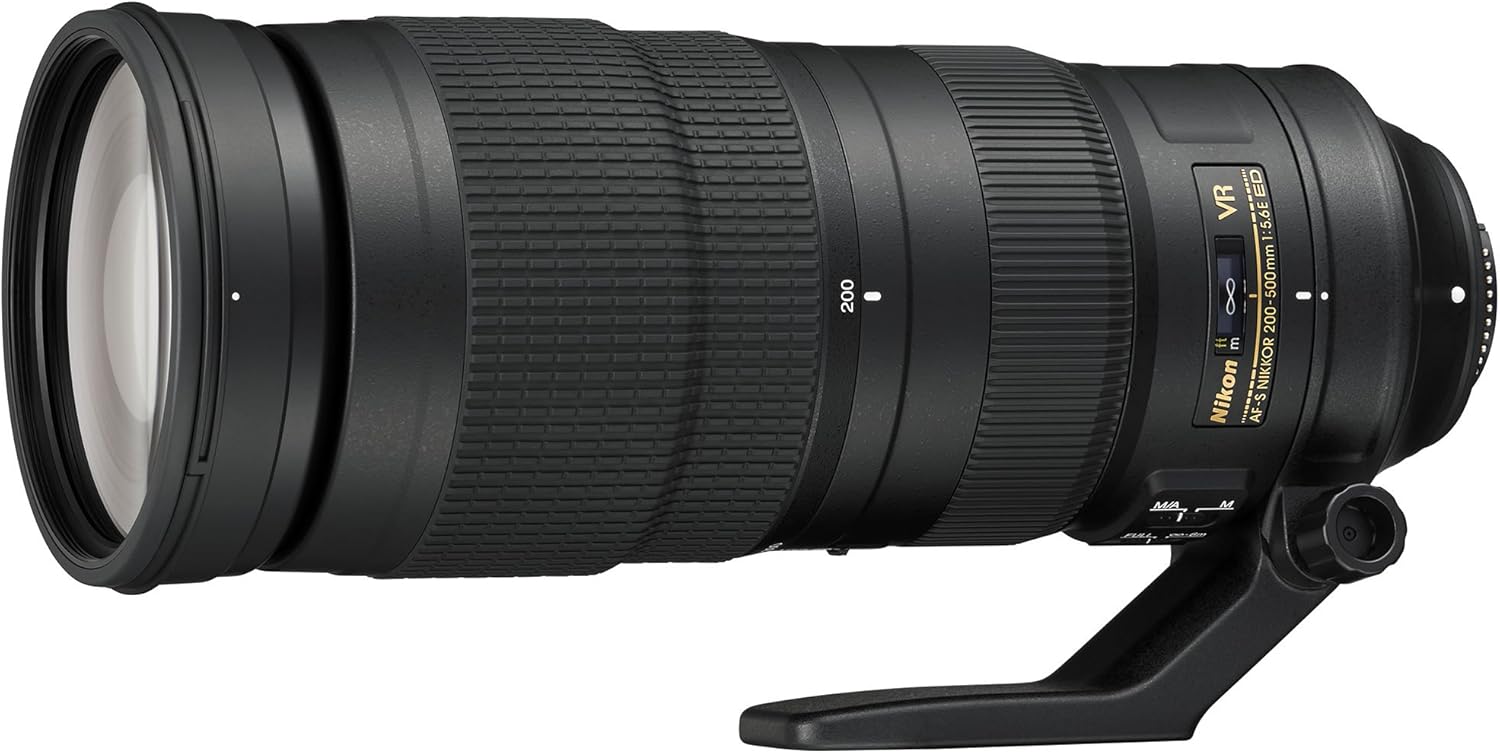
- Audience: Nikon F mount users
- Aperture Control: Features electromagnetic aperture control for consistent exposures
- Autofocus: Reliable and quick autofocus system
- Stabilization: Excellent Vibration Reduction (VR) system
- Value for Money: A cost-effective option for serious sports photography
If you’re a Nikon user looking for a lens that offers a solid balance between reach and affordability, the AF-S 200-500mm f/5.6E ED VR might be the lens for you.
The lens features electromagnetic aperture control, ensuring that your exposure remains consistent even during rapid shooting.
With its impressive autofocus and Vibration Reduction (VR) systems, this lens helps you get those crucial, split-second shots in sports like basketball, tennis, or even motorsports.
| Why This Lens? | Details |
|---|---|
| Reach & Affordability | The 200-500mm focal length provides solid reach without breaking the bank. |
| Exposure Consistency | Electromagnetic aperture control maintains consistent exposures during action shots. |
| Stabilization & Focus | Excellent VR and autofocus systems ensure sharp, clear images. |
Curious about lens durability? Our article on do camera lenses wear out might shed some light on this topic.
Fujifilm XF 100-400mm f/4.5-5.6 R LM OIS WR

- Audience: Fujifilm X-mount camera users, especially the X-series
- Stabilization: Highly effective 5-stop Optical Image Stabilization (OIS)
- Image Quality: High-performance zoom for exceptional sharpness and clarity
- Compatibility: Tailor-made for Fujifilm’s X-series cameras
For Fujifilm enthusiasts, the XF 100-400mm lens is a game-changer in sports photography.
Its 100-400mm telephoto reach is perfect for capturing the intensity of a football game, the elegance of gymnastics, or even the agility in a tennis match.
One of its standout features is the 5-stop Optical Image Stabilization (OIS). This is particularly useful for newcomers to sports photography, as it helps to mitigate camera shake, especially at longer focal lengths.
| Why This Lens? | Details |
|---|---|
| Mighty Reach | A 100-400mm focal length is ideal for a variety of sports. |
| Superb Stabilization | 5-stop OIS significantly reduces camera shake for clearer shots. |
| Fujifilm Special | Optimized for Fujifilm X-series cameras for seamless integration. |
HD Pentax-D FA 150-450mm f/4.5-5.6 ED DC AW

- Audience: Pentax K mount users
- Compatibility: Full-frame and APS-C Pentax DSLRs
- Construction: Weather-sealed and coated for durability and performance
- Features: Includes autofocus options and HD coatings for improved image quality
Pentax users, rejoice! The HD Pentax-D FA 150-450mm lens offers an extraordinary telephoto range for your sports photography needs.
Whether you own a full-frame or APS-C Pentax DSLR, this lens is designed to be compatible with both.
Notably, the lens comes with weather-sealing and HD coatings, ensuring that you can shoot in various conditions without worrying about lens damage or compromised image quality.
| Why This Lens? | Details |
|---|---|
| Extra-Long Reach | The 150-450mm range makes it versatile for both near and far action shots. |
| Weather-Ready | Weather-sealed construction lets you shoot in diverse conditions. |
| Full-Frame & APS-C | Compatible with both full-frame and APS-C Pentax DSLRs, making it highly versatile. |
Do you want to learn more about whether lenses are water resistant? Check out our full guide are camera lenses waterproof for more details.
FAQs
Can a 50mm Lens Be Effective for Sports Photos?
A 50mm lens is generally not the best choice for sports photography. The lens lacks the telephoto reach needed to capture distant action, making it more suitable for portraits and street photography.
Is a 300mm Lens Suitable for Capturing Sports?
Yes, a 300mm lens can be quite effective in sports photography, especially for capturing subjects that are at a considerable distance. It’s a popular choice for outdoor sports like soccer or baseball.
Does a 70-200mm Lens Suffice for Sports Photography?
A 70-200mm lens is versatile and can be good for sports photography, particularly for action that is relatively close to the photographer. Its zoom range offers some flexibility in framing.
When is a 50mm Lens Not Advisable to Use?
A 50mm lens is not advisable for capturing distant or fast-moving subjects, such as in sports photography or wildlife photography, where a telephoto lens would be more effective.
Is a 70-300mm Lens Effective for Sports Photography?
A 70-300mm lens can be a good option for sports photography as it offers a wide range of focal lengths, suitable for both closer action and distant plays.
What Focal Length is Most Suitable for Sports Photography?
The ideal focal length for sports photography depends on the sport and your distance from the action. Generally, lenses with longer focal lengths like 300mm or 400mm are more suitable.
What’s the Highest ISO Setting for Sports Photos?
While there’s no fixed “highest ISO,” many sports photographers use higher settings like ISO 1600 or 3200 to capture fast action in varying light conditions.
What Aperture is Best for Sports Photography?
A wide aperture like f/2.8 or f/4 is often preferred in sports photography. It allows more light into the lens, enabling faster shutter speeds to freeze action.
Which Camera Mode is Commonly Used in Sports Photography?
Most sports photographers use Aperture Priority or Shutter Priority mode. These modes allow quick adjustments to aperture or shutter speed, crucial for capturing fast action.
Should Auto ISO be Used for Sports Photos?
Auto ISO can be useful in sports photography for maintaining a fast shutter speed. However, be mindful of potential noise at extremely high ISO settings.
How Can I Capture Great Sports Photos with My Canon Camera?
To capture great sports photos with a Canon camera, use a fast shutter speed, wide aperture, and consider a telephoto lens. Ensure your autofocus settings are optimized for fast action.
Conclusion
Choosing the best camera lens for sports photography can make or break your experience in this thrilling field.
Whether you’re a Canon devotee, a Nikon enthusiast, a Sony aficionado, or a user of Fujifilm, Pentax, or Micro Four Thirds cameras, there’s a super-telephoto lens out there for you.
From capturing the sheer power of a slam dunk to the intricate strategies in a game of chess, the right lens will help you seize those fleeting, awe-inspiring moments.
So, gear up, and may your next sporting event be a playground for your photographic prowess.
For more beginner-friendly advice, feel free to dive into our articles, like what camera lens do I need or should I buy used camera lenses.


![You are currently viewing The Best Camera Lens for Sports Photography [2023]](https://photographyexplorer.com/wp-content/uploads/2023/09/best-camera-lens-for-sports-photography.jpg)
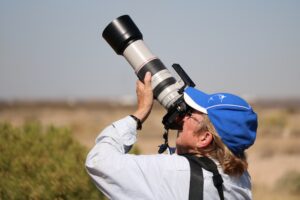
![Read more about the article Best Lens for Urban Photography: Top Picks for Capturing City Life [2023]](https://photographyexplorer.com/wp-content/uploads/2023/10/best-lens-for-urban-photography-300x200.jpg)
